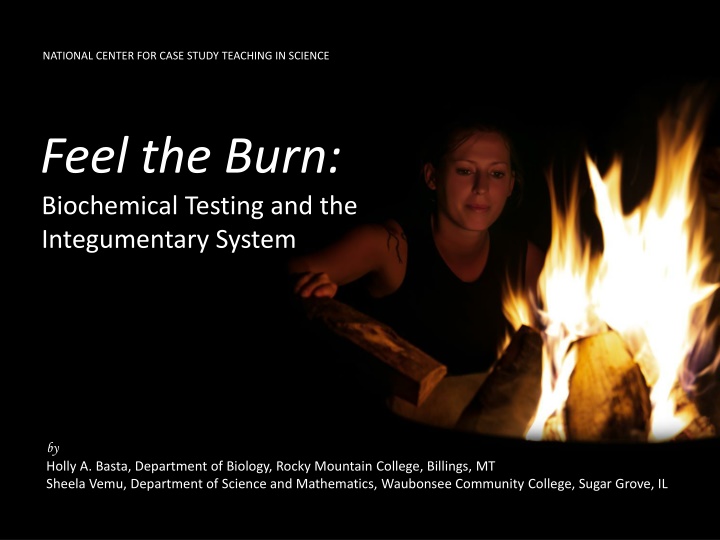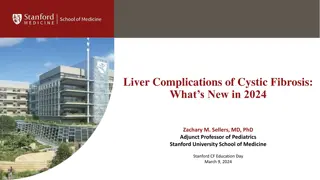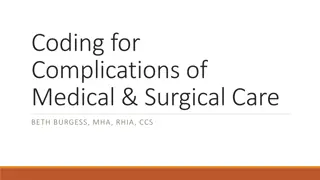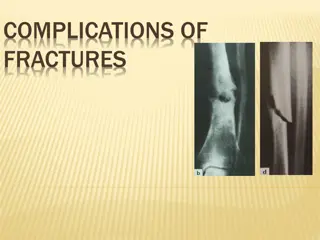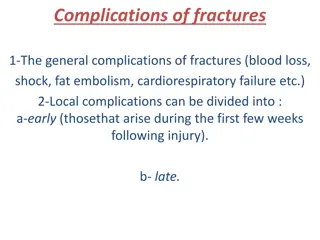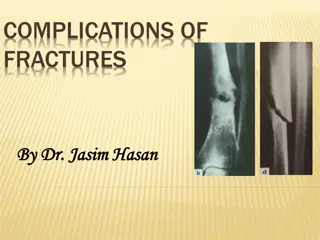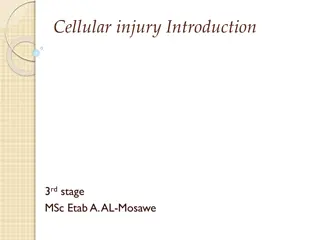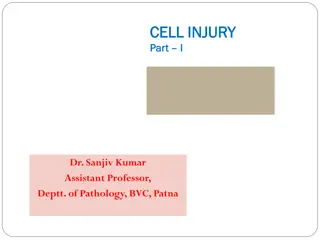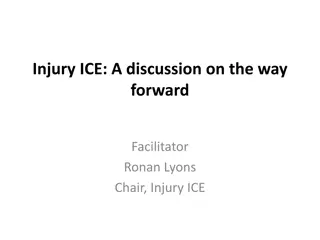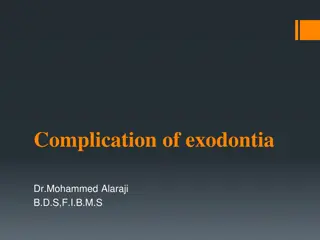Burn Injury Complications and Treatment: A Case Study
Alison, a young woman with a burn foot injury, undergoes skin grafting which leads to inflammation and bacterial infection. Despite antibiotic treatment, she develops bacteremia and an abscess. The case study explores burn degrees, skin layers, graft types, inflammation causes, bacterial identification, antibiotic efficacy, and complications.
Download Presentation

Please find below an Image/Link to download the presentation.
The content on the website is provided AS IS for your information and personal use only. It may not be sold, licensed, or shared on other websites without obtaining consent from the author.If you encounter any issues during the download, it is possible that the publisher has removed the file from their server.
You are allowed to download the files provided on this website for personal or commercial use, subject to the condition that they are used lawfully. All files are the property of their respective owners.
The content on the website is provided AS IS for your information and personal use only. It may not be sold, licensed, or shared on other websites without obtaining consent from the author.
E N D
Presentation Transcript
NATIONAL CENTER FOR CASE STUDY TEACHING IN SCIENCE Feel the Burn: Biochemical Testing and the Integumentary System by Holly A. Basta, Department of Biology, Rocky Mountain College, Billings, MT Sheela Vemu, Department of Science and Mathematics, Waubonsee Community College, Sugar Grove, IL
Burned Alison, a 22-year-old female, was admitted to the emergency room with a burn from a campfire accident on her foot. She insisted that it was not very painful and had therefore waited several days before coming to the hospital. 1. 2. What degree of burn is this? What layers of skin have been damaged? Why was it not very painful? What treatment might the doctor recommend? 3. 4. 2
Graft The doctor recommended Alison receive a skin graft. Although the burn was severe, it was relatively small, so the graft was taken from another location on Alison s body (her leg) and transplanted to her ankle. 5. Would this be considered an autograft, an allograft, or a xenograft ? 6. List one benefit and one drawback to this type of graft. 3
Inflammation The graft was successful and Alison was sent home. After a few days, the area around the graft became red and inflamed. Alison otherwise felt fine, so did not return to the hospital. After a couple more days, the inflammation had spread and her entire foot was red, hot and painful. She began to feel feverish and returned to the ER. 7. Why might inflammation of the grafted area occur? 8. What tests might be performed to determine if the cause of the inflammation is a bacterium? 9. What would the first line of treatment be? 4
Bacterium Alison received her lab report (see Diagnostic Laboratory 1) 10.Which bacterium do you think is responsible for the inflammation? 5
Antibiotics The doctor prescribed IV antibiotics, specifically methicillin, a common antibiotic to treat Staphylococcus infections. After 24 hours on antibiotics, Alison s infection had not improved; in fact, the inflammation and fever had worsened. The infection was found to have spread to her bloodstream, causing bacteremia. 11. What factors likely caused Alison to be at increased susceptibility to this infection? 12. Are antibiotics appropriate to prescribe for bacterial infections? 13. Form a hypothesis addressing why the antibiotics were not immediately effective. 6
Abscess As the bacteremia grew worse, Alison s graft began to develop an abscess below it, which was filled with pus. The doctor ordered tests for antibiotic resistance (see Diagnostic Laboratory 2 and MRSA info sheet). 7
MRSA In addition to PML necrosis, MRSA can cause more systemic illness. Most strains of MRSA encode enterotoxins, which can cause gastroenteric and toxic shock syndromes. MRSA infections are common in hospitals, prisons, military barracks and child care facilities. 14. What do you think the cause of the pus is? 15. Describe three reasons why MRSA is so dangerous. 16. Draw a picture of what is happening molecularly with the latex agglutination test. 17. Why, of all the proteins, does the latex agglutination test assess presence of PBP2a? 18. Where do you think Alison acquired this infection? What is an infection acquired in this manner called? 19. Describe three reasons why MRSA is so difficult to treat. 8
Extreme Measures Alison s doctor first ordered complete sanitation of Alison s room and enforced strict handwashing rules with all medical staff. She also instructed Alison and her parents that they needed to be very diligent with their handwashing. Next, the doctor drained the pus from the abscess. The doctor then bathed the area with chlorhexidine, a collagenase and mupirocin. Topical vancomycin was then applied and the wound was wrapped. Alison was worried about disrupting the graft, but her doctor asserted that IV medication was not very effective on burns. 9
Treatment 20. Why are extreme measures taken to rid the hospital of MRSA? 21. Why do you think IV medication is not very effective at burn sites? 22. Why does chlorohexidine not damage Alison s tissue? 23. Why would the collagen protein be targeted to break down necrotic tissue? 24. Why do you think vancomycin is effective on most strains of MRSA when nearly no other antibiotics are? 10
Healing As Alison s inflammation subsided, she slowly began to heal. Her doctor told her she was very lucky, as most graft patients infected with MRSA lose their graft (2). She told Alison that she expected a full recovery with some minor scarring. 25. Draw a concept map of integument repair using the following terms: Mast cells Collagen fibers Macrophage Fibroblasts Inflammatory response Scab Scar tissue Phagocytosis 26. Based on your knowledge of MRSA and the immune system, why might the healing process proceed slower than usual in Alison s case? 11
